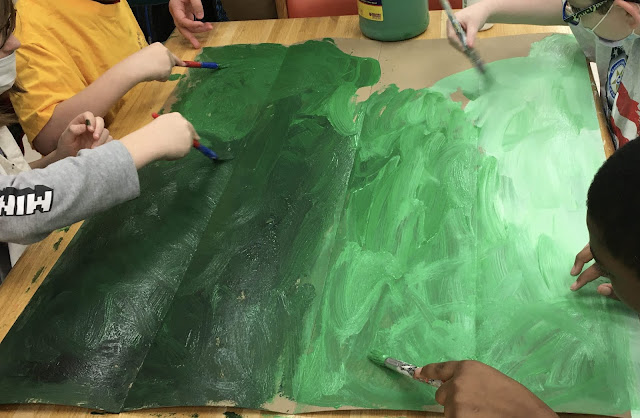Scratch boards are easy to make if you have paper, crayons, acrylic and something to scratch with. My students started the process by filling a piece of paper with patches of color. Some did it in thick stripes, some in simple checkered patterns and others in random patches. The trick is to use a heavy hand when coloring for this project; you want to make a waxy surface.
Once the drawing was done, we painted black acrylic on top of the drawings. It is a strange feeling taking something so beautiful and colorful and covering it with darkness. But it is all part of the process. Once the paint dried, we used bamboo skewers and sharp plastic foil tooling tools to scratch a drawing.
This project is a great way to talk with students about the difference between shapes that are formed with areas of color, and shapes that are formed by lines. It's a way to teach hatching and cross hatching. Sometimes you want color to be bold and dominant, other times you want to use restraint and just let it peak through. Learning the process of making scratch boards is a great way to offer choices for students in the future.



























